 Filmmaking, motion pictures, content creation, movies, commercial photography, advertising, television, social media, broadcast, podcast, or simply put; production. Pick a realm from where you receive(d) a paycheck and call it what you want… Ours is a creative arts business which is so economically impactful, it is often called a global industry. Yet there are no Standard Operating Procedures. I speak specifically of a one process-which-fits-all to plan, collect, and distribute images. Because of technology, generational change, and producers and crews being taught differently (if taught at all) – the majority of productions on every scale, ultimately do it their own way. It has become uncontrolled access to an unregulated industry.
Filmmaking, motion pictures, content creation, movies, commercial photography, advertising, television, social media, broadcast, podcast, or simply put; production. Pick a realm from where you receive(d) a paycheck and call it what you want… Ours is a creative arts business which is so economically impactful, it is often called a global industry. Yet there are no Standard Operating Procedures. I speak specifically of a one process-which-fits-all to plan, collect, and distribute images. Because of technology, generational change, and producers and crews being taught differently (if taught at all) – the majority of productions on every scale, ultimately do it their own way. It has become uncontrolled access to an unregulated industry.
Whether it was nepotism or you went to school for it or fell in by happenstance (like me) – everybody’s “How I got into the biz” is subjective. From jobs worked on, places traveled to, people met, etc. — most of us entered through different doors. Sprinkle in the nurture vs. nature thing and everybody’s life experience is very different. Depending on your production market, job title, freelancer or staff — normal is what you know.

Remember after the lockdown of 2020, when discussions began about how and when things will get back to normal?  Would COVID compliance become standard? Would remote feeds and virtual video villages be a thing? What would any “new normal” look like? Yes, there were plenty of us who were convinced things would resume as before —like normal. But what was / is normal?
Would COVID compliance become standard? Would remote feeds and virtual video villages be a thing? What would any “new normal” look like? Yes, there were plenty of us who were convinced things would resume as before —like normal. But what was / is normal?
In my opinion, it was the early part of 2004, give or take a few months either way, when the production world changed—forever. New ways appeared on the horizon. Cool tech, internet speed, and a generational transition aligned to form a series of perfect storms. From easy access of tools to definitions and lingo to the intangibles; change was massive—and apparently infinite. The largest production disruption of our time was the great digital flip.

The first catch phrase to emerge was — adapt or die.
POST-PRODUCTION / LAPTOP EDITING The initial digital tsunami was the desktop computer with window-based software. As graphic images moved across a monitor, the idea of converting motion pictures into files became reality. Exposed film was converted to digital at the lab and then inputted to digital editing systems. This end-process happened mostly at a post-production house. Similar to needing a lab to develop film, having a post-house partner was essential. Even if either was in your market, you still had to get in a vehicle to get there. In most instances, film had to be shipped to a big city lab. Many creators flew to fancy post-houses for fancier effects work. Then editing bays popped up inside ad agencies and production companies and eventually onto personal laptops. Film was changing to digital. Post-production got cheaper, smaller, and accessible. In the aftermath of this first big wave receding, many labs and post-houses went out of business.

SOFTWARE / APPS These seeds were / still are the biggest disruptor. Use of software for all related tasks and crafts associated with the creative arts would become the universal link. Writing, budgeting, project-planning, OS for cameras, etc.; there was / still is software for virtually every process. The quantity of arriving waves of change grew quickly, all originating from software.
CAMERAS If you are in the business of commercial photography or the production of commercial motion pictures, spoiler alert, we arrived at a place of too many cameras and not enough budgets ten years ago. Who else remembers when there were two basic ways to make pictures appear to be moving—with film or videotape? Yes there were and are multiple formats of each but the existence of only two lanes seemed to govern at least a sense of a standard production process.
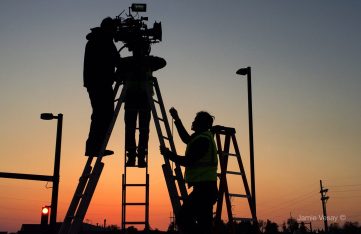
CINEMATOGRAPHERS vs CAMERA OWNERS And just like that, everybody is a DP. Did you know there used to be a definitive line between a film crew and a (stills) photo crew? At least in commercial-advert world. Two separate bids, budgets, and creative. Funny, there were these mini battles over schedules, call sheets, lunch orders, and keeping the set lit for “stills” to step in after the film crew got their shot. But as new digital days passed, it wasn’t long for the words film and stills to be dropped, and in another minute, that definitive line was extinct. Since the majority of commercial photographers now shoot motion, they call themselves cinematographers. Any photo studio who flips that switch is now a production company. “But you can’t do that / you can’t shoot that / you need to work up the ladder,” said the Old School. “Sure I can / I’m doing more work tomorrow / what ladder?” said the New Gen.

HOBBY vs BUSINESS vs ART vs CRAFT Since production was a semi-exclusive club and so many new people were shooting, there was a period of prejudged curiosity about what was happening. “Are you students making a school movie or hobbyists having fun with friends or wait, are you a production company making a TV commercial?” I asked these questions because it simply appeared to be—different. Replies were mostly informative but with a veil of contrasting energy. Conflicts converged within parameters of threat of livelihood or auto-dismissal of a newer, better way or the elephant-in-the-room of age.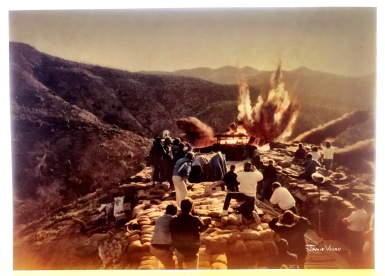
WAR ON LABOR Getting a next gig used to be a familiar process. The first (literal) phone call was made by a Production Manager or a Producer. In my role as a Production Manager or Coordinator or even as a Location Scout on a commercial, I was often called by the Executive Producer. Producers then expected a local department Key to hire local crews. But things changed here too. Because there are so many “production companies” and most models lean toward small / cheap / multiple-titles — IF they even call, Production Assistants (PAs) often get that first and moreover the only call. Yes, that “call” has changed; from phone to email to post on social media to text to whatever the next app of the month is…
JOB SEARCHES The good news was, the internet changed the way jobs were listed. The bad news is, the internet changed the way jobs are found. From early-days bulletin-board posts to websites to email to basic search to social media groups; being online became the port of entry for all production work. Now, the vetting and legitimacy of the job posters and those applying? This is where things got messy. If you’re a freelancer, the saying is, “You always have two jobs. The job you’re working on and the job of finding your next job.” Ironically, it has never been such hard work to get new work.
FAST FOOD HIRING Being online 24/7 became a thing and attention spans got shorter. Typical job posts went from fairly descriptive and legitimate to looking desperate and absurd. “Need a Gaffer by Wednesday.” “Food Stylists in City X, go.” “PA / Driver / AC – this afternoon. $100.” Sparse info and expedient requests indeed, but there’s no time to qualify the job or ask any questions if you’re interested because it’s – FAST FOOD APPLYING. Once upon a time, that work call would include a check of your availability, your day rate, and if all was good you’d be put on hold. If the job was awarded or green-lit, you would be booked. If the project wasn’t happening, you would be released from said hold. But in the new world, the rush to get the next gig has people lurking on social media and responding ASAP w/ zero Q & A. Positions filled. Done. Does that mean the best candidate for the job has been hired? It means parties somehow worked it out, and it probably went well enough. Fine. Right place, right time, whatever. But there is a bummer of a trend related to the express hire. IF you are the person hiring and interact through any means with anybody about a potential gig, and left the decision door open, please FOLLOW-UP. A simple short answer about the position or the project status via any method of communication is courteous and professional.
FAST FOOD APPLYING. Once upon a time, that work call would include a check of your availability, your day rate, and if all was good you’d be put on hold. If the job was awarded or green-lit, you would be booked. If the project wasn’t happening, you would be released from said hold. But in the new world, the rush to get the next gig has people lurking on social media and responding ASAP w/ zero Q & A. Positions filled. Done. Does that mean the best candidate for the job has been hired? It means parties somehow worked it out, and it probably went well enough. Fine. Right place, right time, whatever. But there is a bummer of a trend related to the express hire. IF you are the person hiring and interact through any means with anybody about a potential gig, and left the decision door open, please FOLLOW-UP. A simple short answer about the position or the project status via any method of communication is courteous and professional. 
PROFESSIONALS VS. CLUELESS A funny line to come from the turbulence was, “If you think hiring a professional is expensive, wait until you hire an amateur.” Yes, this is true in all professional services but in production, since everybody (too often thinks they) could do it – they flailed. And then another new normal was born. The fix-it call. It would go something like,”Umm, hey, ugh, I know you didn’t get the bid and all but now that it’s done and there are issues, do you think you help us fix it?” Editors were on the top of this call list.
The BUSINESS of it being a business. You do know it is a business, right? It is less shocking but equally disappointing how so many entities are “in the business” without nary a checking account or a business card. A few who have already moved on to a “real job” have said, “I probably should have treated it more like a business.” If you charged for your services at least once, always charge after that… Be paid for working – a job! Unless you are a hobbyist or student not making any money from your work or play and don’t care to make money doing it. If the latter, maybe you should bale out from reading this – like now. 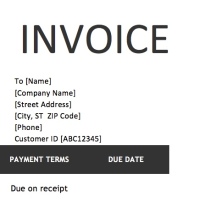
FREE, CHEAP, TRADE Again, if you and your buds are making that passion project or shooting anything non-commercial, and not charging anybody, this paragraph is not for you. However if you are working for a client of any size that ordinarily would pay a vendor to do that job, and you are not being compensated with money, you are part of the problem. And this is not solely aimed at (mostly) the next new camera owners.
Local cable companies and news stations did production for free if the client buys time on their outlet. Yes, FREE. This is extraordinarily INCORRECT and borders on anti-trust laws and unfair business practices. How can any business compete with free? Paying for services, charging a fair market price, and buying consumer goods with a paycheck are basics of economics. There was a time in commercial filmmaking, were associated vendors provided specialty services, production supplies, and equipment rentals to the business of filmmaking. Because of the digital disruption, many of these products and services have also become extinct.

AGEISM It is happening in every work place. If you are a denier, you are ignorant to the real world. If you are old and haven’t experienced it, good for you. If you are young, you have no point of reference of it—yet. Being labeled old in this business was my biggest personal ‘I did not see it coming’ moment. Nobody warned me about the day on set when you will be looked at differently, even addressed as such aloud, and not get hired or rehired because of age.
OLD SCHOOL vs NEW WAVE My seasoned colleagues and I would love to work with the new generation. We are as interested in teaching as we are in learning. Never stop learning. You might know new ways but we share proven processes and intangible ideals via experienced collaborations. Really? What’s with the sighs and head-shakes? And the silly lines like, “We don’t want this to look over-produced,’ or “we don’t need pre-production,” or “continuity is overrated …” Doing it the perceived easy way is a race to mediocrity—or worse. Know that there’s always better, and best is attainable if you try. Realize your vision with a collaborative view. Sorry, not sorry—but we care(d).
 SMALL CREWS & THE ONE-HUMAN BAND The first time I heard somebody say, “The days of big crews are over,” my reaction was, Why say that? After I wept – briefly, I pondered. Well, with these DSLRs and a flip-of-a-switch to shoot motion and a bumper crop of new shooters… perhaps this too is another new normal. Then production company websites used proclamations of shooting styles such as ‘run & gun’ and ‘guerilla’ since “we’re a small crew.” Sigh.
SMALL CREWS & THE ONE-HUMAN BAND The first time I heard somebody say, “The days of big crews are over,” my reaction was, Why say that? After I wept – briefly, I pondered. Well, with these DSLRs and a flip-of-a-switch to shoot motion and a bumper crop of new shooters… perhaps this too is another new normal. Then production company websites used proclamations of shooting styles such as ‘run & gun’ and ‘guerilla’ since “we’re a small crew.” Sigh.
Here’s the deal. If you’re killing it with a tiny crew or it’s you alone and those models are somehow sustainable for you; bravo. Me? I’m all about DIY for home improvement and sewing a button on a favorite shirt—but legit production? Commercial filmmaking or photography? Nope. One human doing it all is not a collaboration. When you’re on a set with a collection of like-minded pros and working together on something cool, in a great location; it’s nothing but production nirvana. It’s why I do it. And by the way, an irony from the anti-big-crew folk is – after they add a few buds as crew and friends and family as talent and invitees to come hang out; they’re looking like a big crew. Who wants pizza?

CROWDSOURCING Need lenses or lights? How about a cast or a camera!? Just ask the crowd. And with zero assumption of any capital exchange. “We’ll give you a credit. I’ll buy you lunch—some day. It’ll be fun.” And whatever you do, don’t question the economics. I did, more than once. “IF you are being paid for your services and I am aiding that transaction, shouldn’t I benefit financially, even in a small way? Or better… hire me.” Replies ranged from online shaming to aggressive emails to just… crickets.
I am NOT TALKING ABOUT crowdfunding for a human condition! Those solutions are awesome. Humans and tech doing good. I speak of crowdsourcing or crowd-funding as financial support for a commercial entity. This does nothing for any production economy. This is a scheme equal to or worse than cheap or trade. Ultimately it devalued the production dollar.
SAFETY You’d think most humans would say NO to standing in traffic or hanging from a highpoint without a harness or aiming a loaded weapon at another person but there are plenty who couldn’t care less about self-preservation or harming others – IF they get to hold a camera… 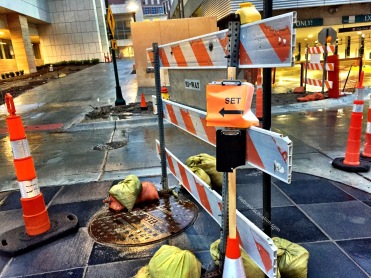 Still, more new and ignorant production folk arrive daily who continue to push the safety envelope. Inexperienced and uninsured. Even after safety guidelines and processes have proven successful and the crew collectively having a last check-valve of commons sense, there are still too many production accidents. Unions, trade orgs, advocacy groups, and government agencies publish regs — and try to enforce them by contract law or update lists of guidelines but policing and punishment has been paltry at best. Please read my post about Railroad tracks and Young Filmmakers should Say No to unsafe filmmaking.
Still, more new and ignorant production folk arrive daily who continue to push the safety envelope. Inexperienced and uninsured. Even after safety guidelines and processes have proven successful and the crew collectively having a last check-valve of commons sense, there are still too many production accidents. Unions, trade orgs, advocacy groups, and government agencies publish regs — and try to enforce them by contract law or update lists of guidelines but policing and punishment has been paltry at best. Please read my post about Railroad tracks and Young Filmmakers should Say No to unsafe filmmaking.
EDUCATION PHASES / LAYERS Imagine a period of time before pre-production begins, where you have to teach people how certain processes should happen… This is usually a question and answer period some time after you get the gig and before you begin the work. This was another normal that began to happen slow enough where it was unnoticed – until this phase happened before being awarded the job and this information sharing was expected – for free.
EDUCATING THE NEW PRODCO / CLIENT, who is the new Producer, Writer, Cinematographer, etc. This new normal is mostly about the basics of the business or trade secrets or local info needed – also for no charge AND we’re not hiring you. Newbie hipsters loved to speak this language like it was—normal (see CROWDSOURCING above). “Dude, c’mon. Share it. Teach the youth. Here’s your chance to show us the right way.” Oh, I said. I’ve always wanted to be a mentor. Well, after a few times of doing this and not getting asked to work with them, I shut up. One of my best clients for years, a photography studio who also jumped into digital motion, fed me this big future of our collaboration if you show us how to produce projects. I did and then they stopped hiring me.
CHURCH is the new Film School The rise of the multi-denominational church (a new normal in religion) has created multimedia studios and platforms. This is not your Sunday morning TV broadcast. Similar but gussied up with better music, graphics, and a link to the website. Somebody has to run the production. Many of these in-church prodcos are shooting for parishioner’s commercial businesses. A business note to this, as a non-profit organization, no taxes are paid.
EQUIPMENT REVELATIONS & EXTINCTIONS Except for studio movies and active production markets, big lighting fixtures were some of the first fixtures to be rented less. Dolly and track were the next segment challenged. Stedicam-like gizmos seemed to be coming out every month. Drones became a whole style of production and disrupted aerial photography and steady tracking. Drones are a mini-metaphor to the new ways of production. There are regulations, licensing, and insurance requirements but because they can be acquired easily and operated with virtually zero training – it is still the wild west.
NO BOARDS. NO SCRIPT! There would be many new firsts to come but these flags were in my opinion the literal waving of the green in the race to the bottom. How do we collaborate – collectively, without a basic plan? And so, the analogies of building a structure without a blueprint floated around. Scripts, storyboards, treatments, and schedules are versions of blueprints. There was a time when these basics were automatic on all projects. Sadly, more projects are coming down the road with none of these… Why? How? Where’s a plan? Why? Yes, I said why twice.
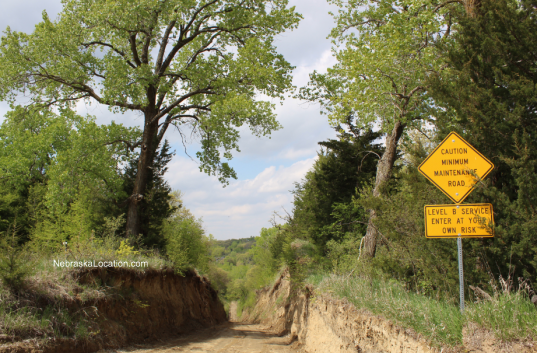
DISCRETION & THE DEATH OF THE NDA Depending on which side of the production arena you worked on and where – there was either an unwritten rule about keeping the work to yourself or you would blab about it willy-nilly to anybody who asked. And along came the Non-Disclosure Agreement (NDA). Presented most often in studio movie-making and commercial advertising introducing a new product, the NDA began to show up more often in even localized projects. It was shocking how so many crew simply ignored this legal document. Social media became both the accomplice and the detective to tracking this new normal.
SOCIAL MEDIA & INFLUENCERS You do know why they call it a tube, right? Back in the days when influencing was called advertising and marketing and side-hustles were called jobs, prior to the internet becoming a new channel – the only way to present your product or service in motion picture format was on television. When we were making commercials, the agencies and clients would inquire about “making a version of the spot to be put on the website.” Now, it is the opposite. Commercial production (of scale) is shot primarily for the internet and now might appear on television.
Then came the social media Influencer. Like many of you, I thought this would be just another trend that would not impact my business but when clients started opting for this route ONLY and ad agencies retooled to create social media divisions – it became a normal.
VIDEO CONTESTS were a short-lived trend which nobody thought any of the work would ever get viewed — until a winner’s entry for a major brand became an international spot airing during the biggest football game of the year. Mind-blowing creative? No. Entertaining and noticed? Yes. At least somebody won – and somebody was paid. And it proved it could be done.
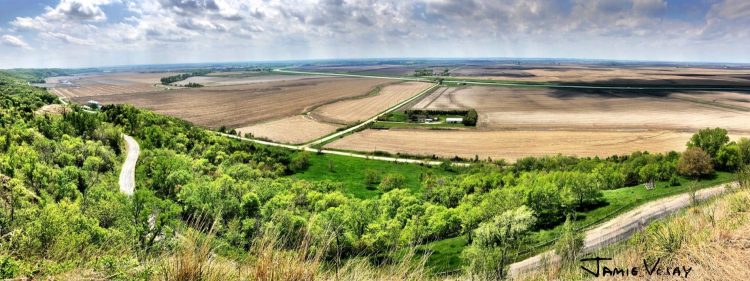
PHOTO CONTESTS They’re still out there. And so many come with zero cash rewards. “We’ll publish the winner(s).” The key words in the terms are “in-perpetuity.” They are grabbing your rights and can use your image forever. They thank you.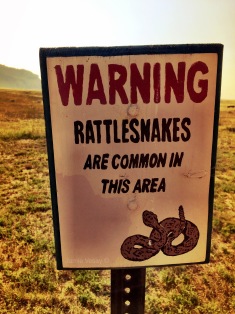
STEALING OF PHOTOS & CONTENT Just because you can, doesn’t mean you should… The term used for stealing video from Y-Tube is rip, as in the the first part of the word ripoff. Treatment writers and look-book / deck creators are the biggest offenders. Ten years ago, a dude tracked and posted multiple wedding photographers who stole other wedding photographer’s photos and called them their own. Who are you people? I have personally had photos stolen which have appeared on other people’s website. One didn’t even remove my watermark. Who are you people?
STOCK PHOTOS and FOOTAGE Talk about a market which got devalued. More floods of images and content creators willing to give up their imagery for free and cheap. Stock video for $5.00. A stock photo for $1.00. Awesome. Not awesome.
ALA CARTE / MISCELLANEOUS LEFTOVERS
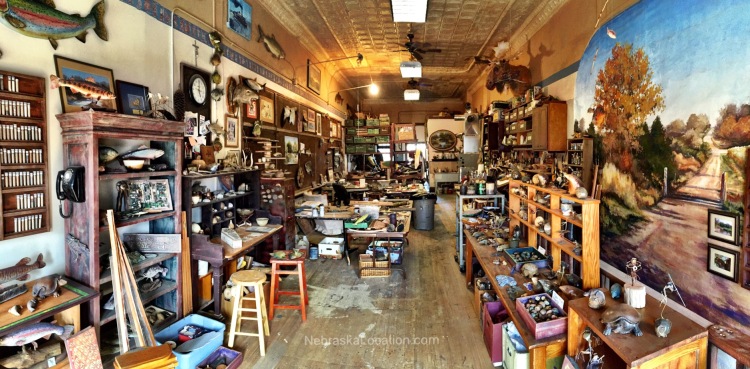
TALENT AGENCIES vs Street Casting and Friends & Family Plan The concept of paying a service to find decent talent or models was misunderstood by most of the new generation. “And I can only use their image for a certain time period?” The word buyout was bantered about (briefly) but when that big number was quoted, any would-be hirer of a talent agency ran away. The wave of free and cheap anything also contributed to this issue. Many agencies closed their doors. Online “agencies” arrived. Kudos to any that are still in business and thriving. Thank you to those who continue to see the value in this service.
AD AGENCIES / CLIENTS TAKE PRODUCTION IN-HOUSE Twenty years ago, the first editing systems were installed in agencies and production companies. Then the ease of access to the tools (cameras, lights, etc.) and college graduates who knew how to handle them grew this segment of the industry into a normal operating procedure. Because of this continuing trend, more independent production companies and freelancers have gone or will soon go – out of business.
INTERNS are the new Producers. Since so many kids and newly anointed filmmakers are so hungry to participate and they basically know the tech required, the assumption of a mature creative needing to handle the reins has become rarified air.
SHARING BIDDING INTEL / ASSEMBLING A BUDGET for free. Eluded to in above sentences, the expectation of complimentary info sharing has become normal behavior – even in putting together a bid. I used to do this all the time back when I was at least in the running to get hired on the gig. My new first reply to these queries is, “Is the job awarded?”
JOINING “Industry” GROUPS or PAGES. A new normal time suck IF you want to be ready for the next job post. How many times have you been solicited to “join our site” or “buy our app?” One time I got pestered and joined. Decided not for me. Founder emailed me tersely notes ala “why would you leave?” Wait, now I’m the bad guy?
MY LOCATION SCOUT / MANAGER POV There is no movie award for Best Location Scout or Location Manager and the positions of Location Scout and Location Manager are generally below the half way point in movie credits. Yet we have have the largest fingerprint on every movie. In production it is a misunderstood craft and too often not a hired position. Since the addition of “Locations websites” and the use of online bnbs – the craft is even more disrespected. I invite you to read another of my posts on the subject of what a Location Scout is and does…

MY ADVICE ON NEW NORMALS You will find yourself at many crossroads in this business. There are things and actions and events which will happen to you, and your feelings will feel new. In some cases – shockingly / I-did-not-see-that-one coming new. Some will be negative and powerful; causing confusion, pain, and pause. Your quest for answers will range from search engines to social media posts to a baffling “There was never a mention of this in any class or book or from any sage advice from anybody.” Similar to the saying “Time heals” — time provides answers. You will consider leaving this business, at least once. If you love it and are a good at it, continue to do it. That’s why I’m still here. Work hard, be kind, stay safe, and have fun.

________________________
Disclaimers
The above post is from my work-life experiences. My first job was on a big-budgeted studio major motion picture, on-location, with a top-shelf crew, a Hollywood Director, huge cast, and period piece sets spanning from 1914 to 1969. I worked on the Special Effects crew. I “got in” through a friend of a friend who knew a guy. It was a blessing and a curse. Blessing because of being trained at such a high level by veteran pros with little to no budget restraints… Cursed because that became my measure of production processes, and what sets should have looked like in the future.
Over the years, I went on to work on more movies in FX, later on others in Locations. I have worked on TV shows, documentaries, photo shoots, filmed concerts, and well north of 500 commercials. I welcome your engagement and intelligent discussion—but before you make any ill-informed comments, look at my resume. If you still feel the need to disagree or attack me via comments, please include your resume.
HONESTLY I call myself a Perennial. I can hang with any-aged human being, physically or conversationally. I own seven domain names, maintain three of them, post to social media platforms associated with each, along with my personal pages. I have ample Friends and Followers. I am online every day. I still make a living from the production industry. I adapted and I’m not dead – yet.
________________________
Words and photos are Jamie Vesay COPYRIGHTED. Legit pubs: ask for permission. All others, please share thoughtfully.